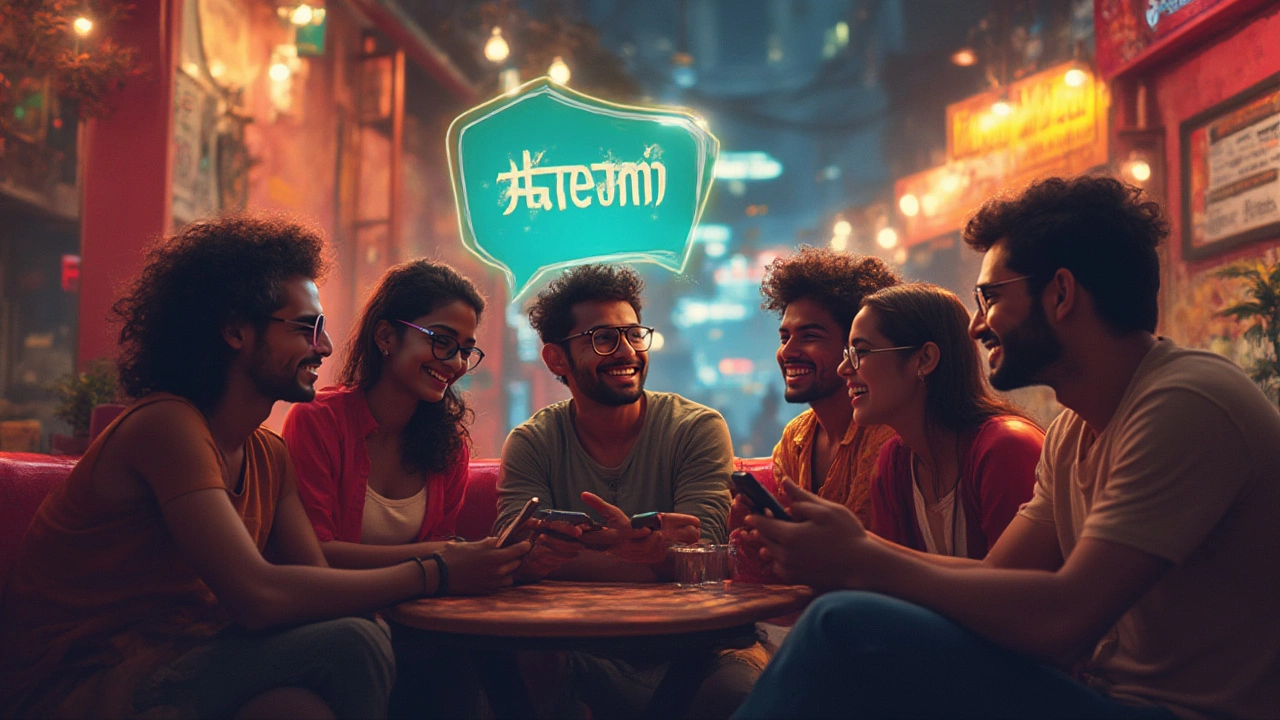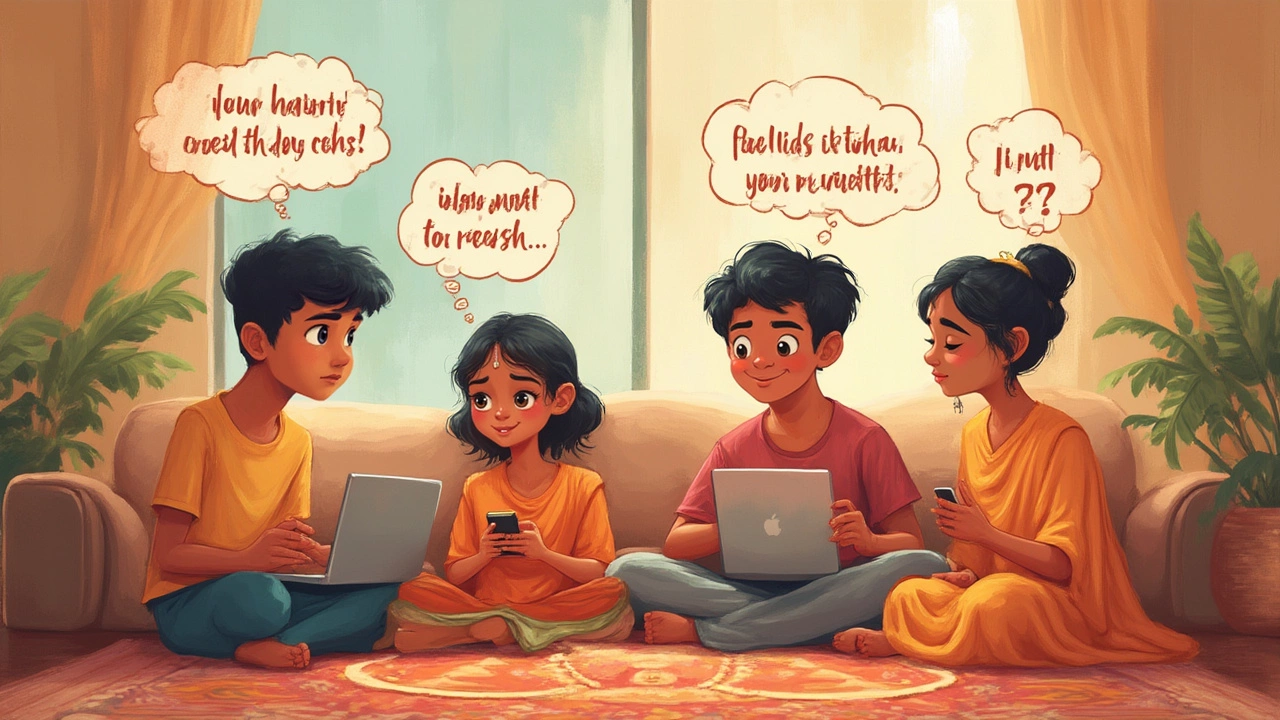Vibe Phrases: Meaning, Origins, Examples & Social Impact
 Jul, 21 2025
Jul, 21 2025
"It’s giving main character energy." Ever been mid-scroll and stumbled across this? Maybe you’ve called someone a "walking red flag," or texted your friends, "Let’s chase some good vibes only!" These quick, catchy lines are everywhere—memes, DMs, TikToks, dinner tables. People drop them and, instantly, the mood shifts. That’s the power of a vibe phrase. The right words at the right moment can spark a reaction, cement inside jokes, or seal a friendship. Even if you’ve never used the exact term "vibe phrase" before, you’ve definitely heard or said them. The real question isn’t just "what does it mean?" It’s "why do we crave these phrases so much?" And just how deep does this trend really go?
What Exactly Is a Vibe Phrase?
If you want to land the meaning in one punchy answer, a vibe phrase is a short, snappy line dropped in conversation to set, express, or shift the mood. Usually, it’s packed with pop-culture references, mild humor, or internet flavor. Examples? "Lowkey loving it," "Catch flights not feelings," "Big yikes," or "It’s a whole mood." If the phrase feels like it could double as a meme or text overlay, you’ve got yourself a vibe phrase.
More than just trendy slang, vibe phrases work like mini emotional cues. They can soften harsh truths (
like "It’s not giving what it’s supposed to give" instead of "I hate this"), or hype up the moment. Sometimes, they act like verbal emoji—quickly translating your feelings with zero drama.
It’s not just Gen Z: Millennials, too, throw these around, and even brands have jumped on. Dove’s "My hair, my vibe" and countless influencer catchphrases are in this family. Advertising researchers reported in 2023 that content using these phrases gets higher engagement—sometimes up to 15% more likes and shares on Instagram or TikTok than plain posts.
A vibe phrase isn’t always funny or light, though—it can spike with sarcasm or even land a serious truth. It can stretch across cultures, picking up local flavor: "setting the vibe" in US slang, "feeling the scene" in the UK, or "mood kara diya" in India. Not all vibe phrases are direct translations, but you’ll spot their impact everywhere.
Where Did Vibe Phrases Come From?
Blame the internet—or thank it. The modern vibe phrase got its swagger from social platforms, especially Twitter, TikTok, and meme accounts. But if you dig deeper, it’s a remix of older pop culture and communication habits. Think about classic sitcom catchphrases (like Joey’s "How you doin’?"). Take iconic quotes, season with rapid digital sharing, and suddenly you’ve got the vibe phrase boom.
In 2017, phrases like "big mood" and "it’s a vibe" shot up in Google Trends. Gen Z led the charge, mixing these one-liners with short-form videos, reaction GIFs, or song lyrics. By 2020, the COVID-19 lockdown trapped everyone inside—with screens as their main social windows. People wanted faster ways to connect emotionally. Study data from Sprout Social found that posts with trendy phrases doubled their comment counts during lockdown months.
Think of it this way: painting a vibe with words, fast. It’s less about what you’re saying, more about how you want people to feel in the moment. Linguists say it’s like verbal shorthand, designed for speed, relatability, and humor. Young folks (ages 14–25) use upwards of 20 distinct vibe phrases on average each week in digital conversations, according to a 2024 poll by a major messaging app. Compare that to a 1990s chat—way more wordy and formal.
But the DNA goes even deeper: Indian filmi dialogues, British sarcasm, American sitcoms, and African street phrases have all shaped today’s vibe phrases. The common link? They cut through noise, stick in your head, and demand a reaction. In 2025, even AI chatbot companies are teaching their bots to pick up and drop vibe phrases, so the bots seem more “human” in conversation.

Real-Life Examples and How Vibe Phrases Work
Walk into a party and say "Vibes are immaculate"—watch everyone glance at each other, nod, or laugh. Text "Not the drama!" and you’ve just summarized an entire complicated situation in three words. The genius is in the swagger and timing.
- Social Media: Think of TikTok trends like "It’s giving…" where users finish with whatever fits—celebrity names, moods, or moments.
- Friend Groups: "Say less," "No cap," "Bet." These are all vibe phrases threaded into day-to-day chats, like linguistic secret handshakes.
- Gen Z Slang: You’ll hear vibe phrases spliced between Hindi, Tamil, or Bengali on Indian college campuses—"Lit hai, bro!" or "Full vibe set." Language fusion only adds to their punch.
- Online Dating: Bios now open with lines like, "Only here for good vibes and playlists." It signals mood, attitude, and sometimes bold honesty—quicker than an essay.
- Brand Lingo: Companies hire copywriters just to brainstorm these. Remember the "Do epic sh*t" line by Adidas, or Netflix’s "Binge-worthy vibes" in 2023 campaigns?
Here’s a quick table showing some popular vibe phrases, their meanings, and where you’re most likely to spot them:
| Vibe Phrase | Meaning | Where Used |
|---|---|---|
| It’s giving… | Expressing a strong association or feeling | TikTok, Instagram, group chats |
| Big mood | Relatable emotion or situation | Memes, Twitter, comments |
| Lowkey/Highkey | Secretly/openly feeling something | Texts, DMs, captions |
| Deadass | Seriously or truly | Snapchat, Gen Z talk |
| It’s not giving | Not meeting expectations | TikTok, reviews |
Tips to Use Vibe Phrases (And Make Them Work for You)
Want to weave vibe phrases into your chats without sounding try-hard? First, know your audience. Some phrases hit harder with friends, but might fall flat at work or with parents. Listen before you leap—the best vibe phrases float around you before you nab them as your own.
New to vibe phrases? Don’t force it. Sprinkle them where they fit: texting your best friend after a wild night ("last night was a whole vibe"), or hyping up a teammate ("Your energy is unmatched"). Pick ones that mesh with how you already talk. If "It’s giving iconic" feels fake from your mouth, maybe "full power" or "legend move" suits you better.
Here’s how you can master the art:
- Start small. Try one phrase at a time in chats.
- Match the mood. Don’t drop "vibes are immaculate" in a serious family meeting—unless your family’s into that kind of humor.
- Check the context. Online, throw vibe phrases into captions, replies, comments—where fun goes down. In person, work them into group hangouts or casual settings first.
- Keep up with trends. Slang is always evolving—last year’s "lit" could be this year’s "fire." Stay current by following meme pages, TikTokers, or YouTubers who are plugged into what’s trending.
- Mix and match. Make mashups or invent your own. That’s how "It’s giving main character" or "No thoughts, head empty" blew up in 2023. Personal twist? “Issa vibe, literally.”
- Be real. Overuse can backfire—if every sentence is a vibe phrase, people might tune you out. Use them to enhance, not replace, your personality.
A study by Linguistic Society in 2024 found that using the right vibe phrase in group settings made people appear 23% more relatable and “in the know” compared to those sticking with traditional chat. That’s not magic—that’s just language evolving faster than ever, and all you need is one good line to join the ride.